

Bonaventure Island, a provincial park in the Gulf of St. Lawrence off the eastern tip of the Gaspé Peninsula, is home to the second largest Northern Gannet breeding colony in the world. Monogamous pairs use the same nests, grass or seaweed held together by droppings, for years with nests gradually building into tall mounds. Mated pairs greet each other by standing face to face, wings out, knocking bills together and bowing. Northern Gannets dive vertically into the sea at velocities of up to 62 mph to feed on Atlantic mackerel and herring. They feed their young by regurgitating partially digested fish. (1/13)
©Rich Beckman

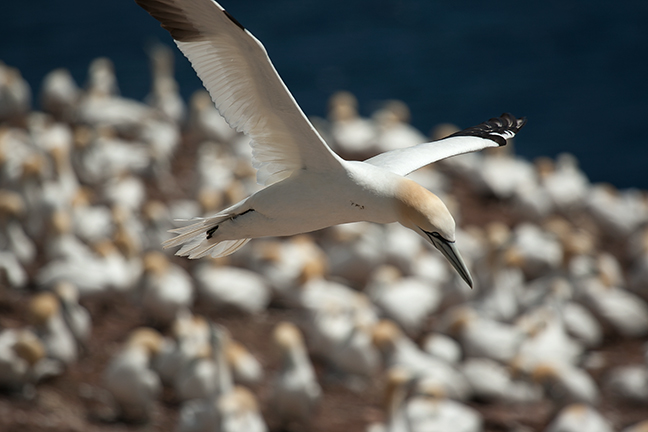
Bonaventure Island, a provincial park in the Gulf of St. Lawrence off the eastern tip of the Gaspé Peninsula, is home to the second largest Northern Gannet breeding colony in the world. Monogamous pairs use the same nests, grass or seaweed held together by droppings, for years with nests gradually building into tall mounds. Mated pairs greet each other by standing face to face, wings out, knocking bills together and bowing. Northern Gannets dive vertically into the sea at velocities of up to 62 mph to feed on Atlantic mackerel and herring. They feed their young by regurgitating partially digested fish. (2/13)
©Rich Beckman

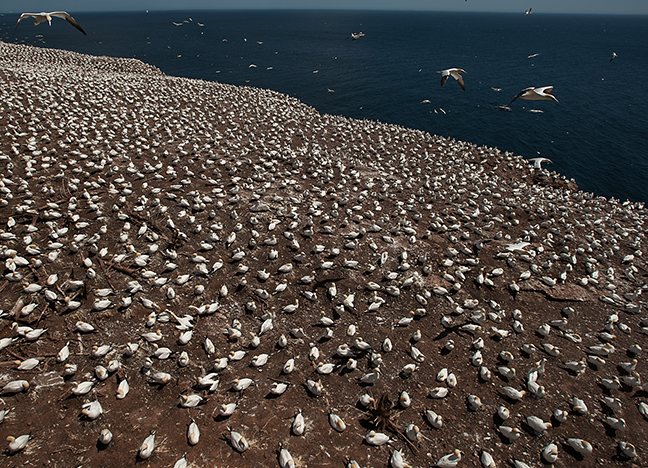
Bonaventure Island, a provincial park in the Gulf of St. Lawrence off the eastern tip of the Gaspé Peninsula, is home to the second largest Northern Gannet breeding colony in the world. Monogamous pairs use the same nests, grass or seaweed held together by droppings, for years with nests gradually building into tall mounds. Mated pairs greet each other by standing face to face, wings out, knocking bills together and bowing. Northern Gannets dive vertically into the sea at velocities of up to 62 mph to feed on Atlantic mackerel and herring. They feed their young by regurgitating partially digested fish. (3/13)
©Rich Beckman

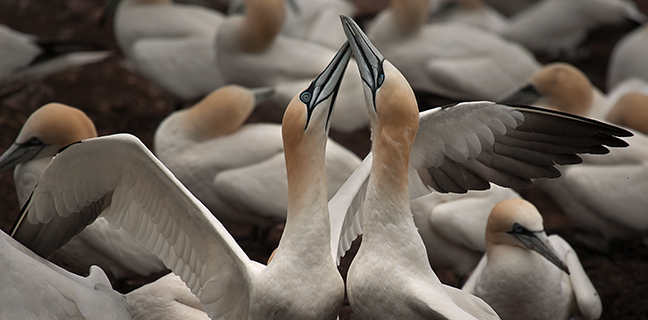
Bonaventure Island, a provincial park in the Gulf of St. Lawrence off the eastern tip of the Gaspé Peninsula, is home to the second largest Northern Gannet breeding colony in the world. Monogamous pairs use the same nests, grass or seaweed held together by droppings, for years with nests gradually building into tall mounds. Mated pairs greet each other by standing face to face, wings out, knocking bills together and bowing. Northern Gannets dive vertically into the sea at velocities of up to 62 mph to feed on Atlantic mackerel and herring. They feed their young by regurgitating partially digested fish. (4/13)
©Rich Beckman

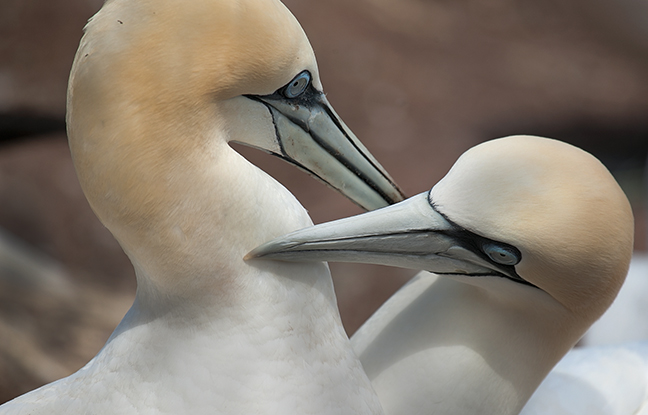
Bonaventure Island, a provincial park in the Gulf of St. Lawrence off the eastern tip of the Gaspé Peninsula, is home to the second largest Northern Gannet breeding colony in the world. Monogamous pairs use the same nests, grass or seaweed held together by droppings, for years with nests gradually building into tall mounds. Mated pairs greet each other by standing face to face, wings out, knocking bills together and bowing. Northern Gannets dive vertically into the sea at velocities of up to 62 mph to feed on Atlantic mackerel and herring. They feed their young by regurgitating partially digested fish. (5/13)
©Rich Beckman

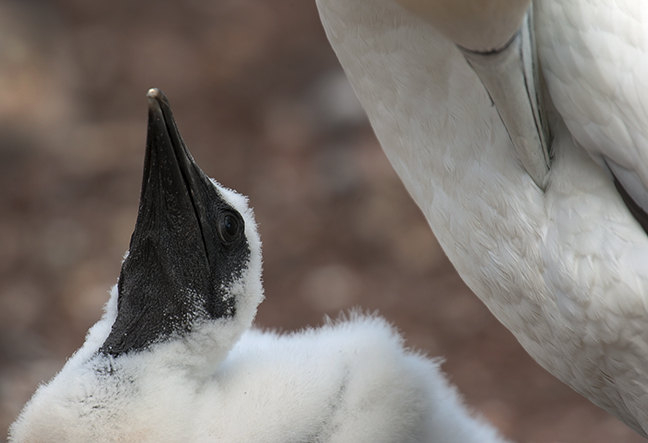
Bonaventure Island, a provincial park in the Gulf of St. Lawrence off the eastern tip of the Gaspé Peninsula, is home to the second largest Northern Gannet breeding colony in the world. Monogamous pairs use the same nests, grass or seaweed held together by droppings, for years with nests gradually building into tall mounds. Mated pairs greet each other by standing face to face, wings out, knocking bills together and bowing. Northern Gannets dive vertically into the sea at velocities of up to 62 mph to feed on Atlantic mackerel and herring. They feed their young by regurgitating partially digested fish. (6/13)
©Rich Beckman

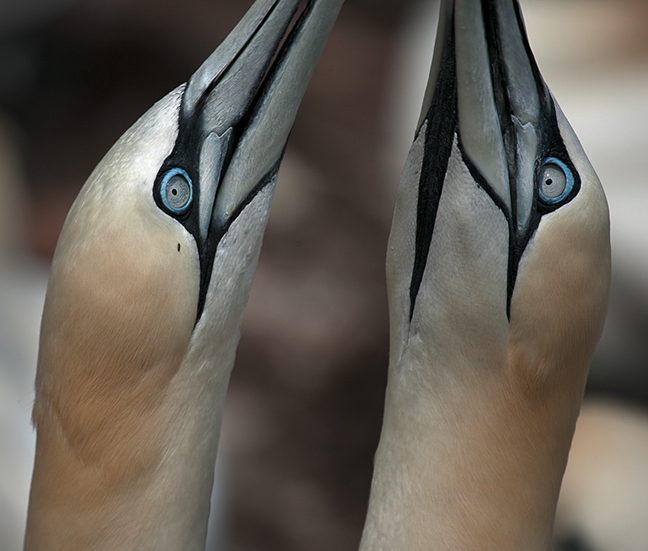
Bonaventure Island, a provincial park in the Gulf of St. Lawrence off the eastern tip of the Gaspé Peninsula, is home to the second largest Northern Gannet breeding colony in the world. Monogamous pairs use the same nests, grass or seaweed held together by droppings, for years with nests gradually building into tall mounds. Mated pairs greet each other by standing face to face, wings out, knocking bills together and bowing. Northern Gannets dive vertically into the sea at velocities of up to 62 mph to feed on Atlantic mackerel and herring. They feed their young by regurgitating partially digested fish. (7/13)
©Rich Beckman

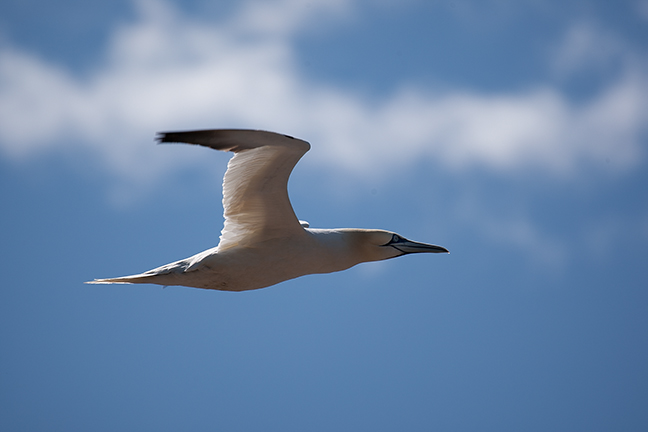
Bonaventure Island, a provincial park in the Gulf of St. Lawrence off the eastern tip of the Gaspé Peninsula, is home to the second largest Northern Gannet breeding colony in the world. Monogamous pairs use the same nests, grass or seaweed held together by droppings, for years with nests gradually building into tall mounds. Mated pairs greet each other by standing face to face, wings out, knocking bills together and bowing. Northern Gannets dive vertically into the sea at velocities of up to 62 mph to feed on Atlantic mackerel and herring. They feed their young by regurgitating partially digested fish. (8/13)
©Rich Beckman

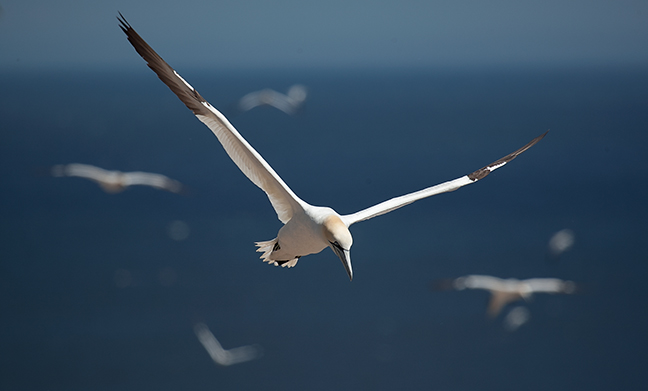
Bonaventure Island, a provincial park in the Gulf of St. Lawrence off the eastern tip of the Gaspé Peninsula, is home to the second largest Northern Gannet breeding colony in the world. Monogamous pairs use the same nests, grass or seaweed held together by droppings, for years with nests gradually building into tall mounds. Mated pairs greet each other by standing face to face, wings out, knocking bills together and bowing. Northern Gannets dive vertically into the sea at velocities of up to 62 mph to feed on Atlantic mackerel and herring. They feed their young by regurgitating partially digested fish. (9/13)
©Rich Beckman

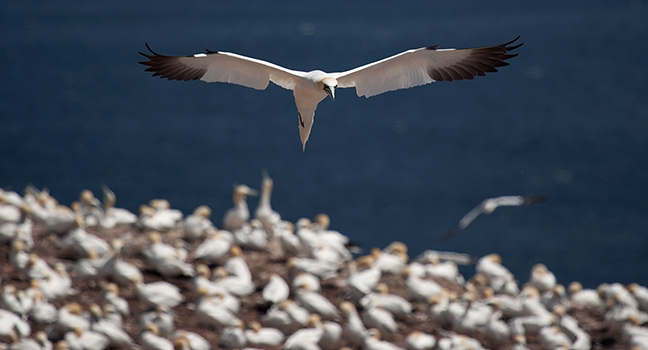
Bonaventure Island, a provincial park in the Gulf of St. Lawrence off the eastern tip of the Gaspé Peninsula, is home to the second largest Northern Gannet breeding colony in the world. Monogamous pairs use the same nests, grass or seaweed held together by droppings, for years with nests gradually building into tall mounds. Mated pairs greet each other by standing face to face, wings out, knocking bills together and bowing. Northern Gannets dive vertically into the sea at velocities of up to 62 mph to feed on Atlantic mackerel and herring. They feed their young by regurgitating partially digested fish. (10/13)
©Rich Beckman

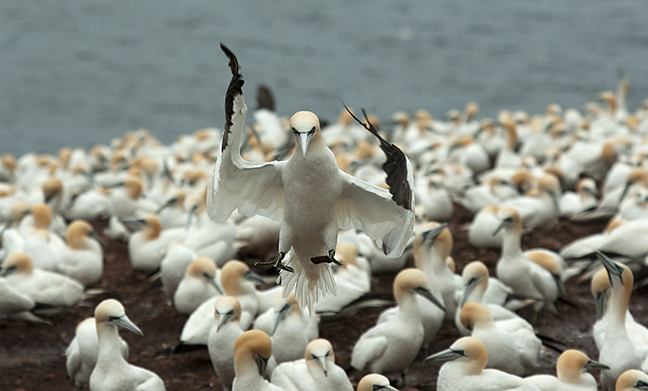
Bonaventure Island, a provincial park in the Gulf of St. Lawrence off the eastern tip of the Gaspé Peninsula, is home to the second largest Northern Gannet breeding colony in the world. Monogamous pairs use the same nests, grass or seaweed held together by droppings, for years with nests gradually building into tall mounds. Mated pairs greet each other by standing face to face, wings out, knocking bills together and bowing. Northern Gannets dive vertically into the sea at velocities of up to 62 mph to feed on Atlantic mackerel and herring. They feed their young by regurgitating partially digested fish. (11/13)
©Rich Beckman

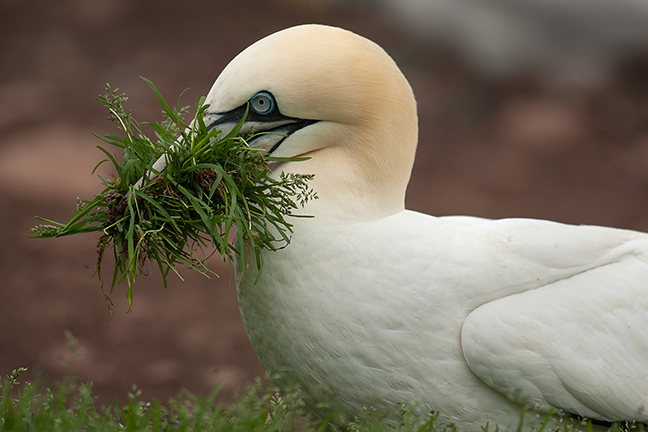
Bonaventure Island, a provincial park in the Gulf of St. Lawrence off the eastern tip of the Gaspé Peninsula, is home to the second largest Northern Gannet breeding colony in the world. Monogamous pairs use the same nests, grass or seaweed held together by droppings, for years with nests gradually building into tall mounds. Mated pairs greet each other by standing face to face, wings out, knocking bills together and bowing. Northern Gannets dive vertically into the sea at velocities of up to 62 mph to feed on Atlantic mackerel and herring. They feed their young by regurgitating partially digested fish. (12/13)
©Rich Beckman

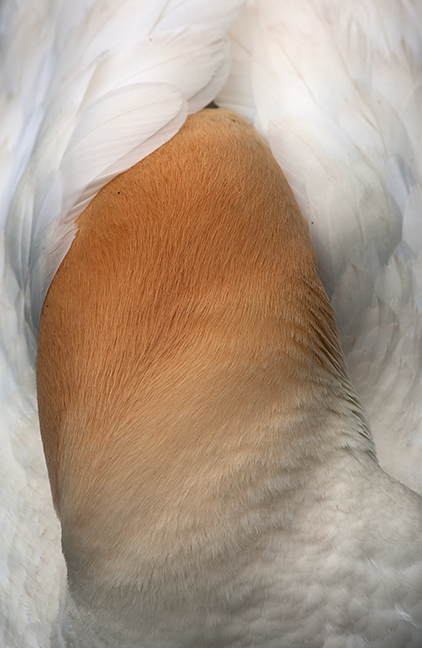
Bonaventure Island, a provincial park in the Gulf of St. Lawrence off the eastern tip of the Gaspé Peninsula, is home to the second largest Northern Gannet breeding colony in the world. Monogamous pairs use the same nests, grass or seaweed held together by droppings, for years with nests gradually building into tall mounds. Mated pairs greet each other by standing face to face, wings out, knocking bills together and bowing. Northern Gannets dive vertically into the sea at velocities of up to 62 mph to feed on Atlantic mackerel and herring. They feed their young by regurgitating partially digested fish. (13/13)
©Rich Beckman